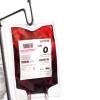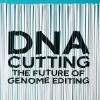Nikki Swarbrick, Laboratory Incident Specialist at SHOT, talks through the key findings from a survey of UK transfusion laboratories.

The United Kingdom Transfusion Laboratory Collaborative (UKTLC) carried out a biennial survey, which is sent to all UK transfusion laboratories that report to the Serious Hazards of Transfusion (SHOT) haemovigilance scheme.
It is intended to represent a “snapshot” of working conditions within the laboratory on a single day. Key findings from previous surveys, which were undertaken in 2013–2019, highlighted concerns with workloads, staffing levels, increased vacancies, training of inexperienced staff and inadequate specialist support.
Key findings of the latest survey include:
Staffing: Increased workload, increased vacancies and difficulties in recruitment and retention.
Qualifications, knowledge and skills: Increased difficulties in training and maintaining competency and reduced satisfaction with newly qualified Health and Care Professions Council (HCPC)-registered biomedical scientists.
Information technology (IT): Limited number with full vein–to–vein IT.
Just culture: Improved ability to raise concerns, increased learning from excellence, increasing incorporation of human factors in practice.
Click here to read the full article.
Image credit | Science-Photolibrary




